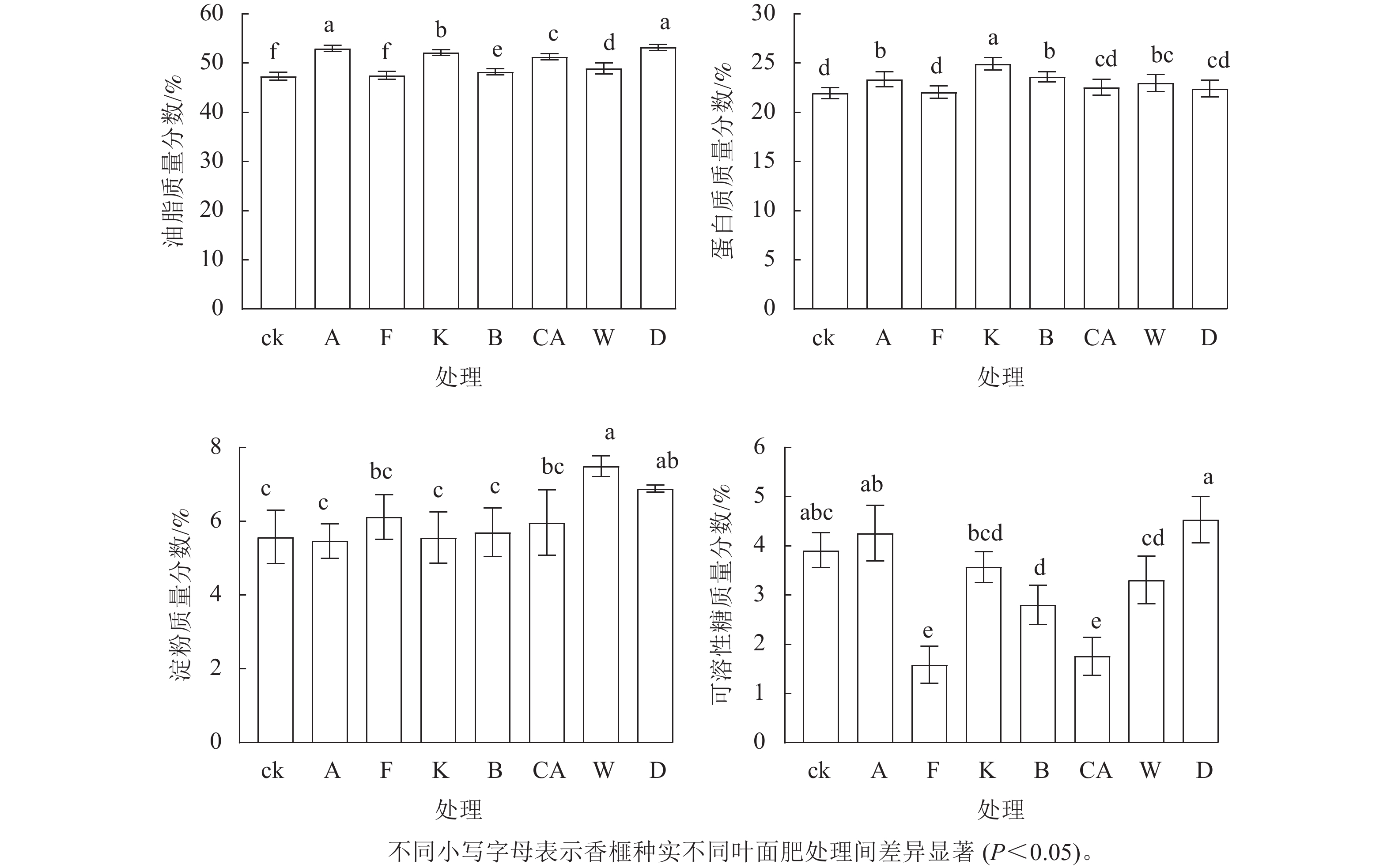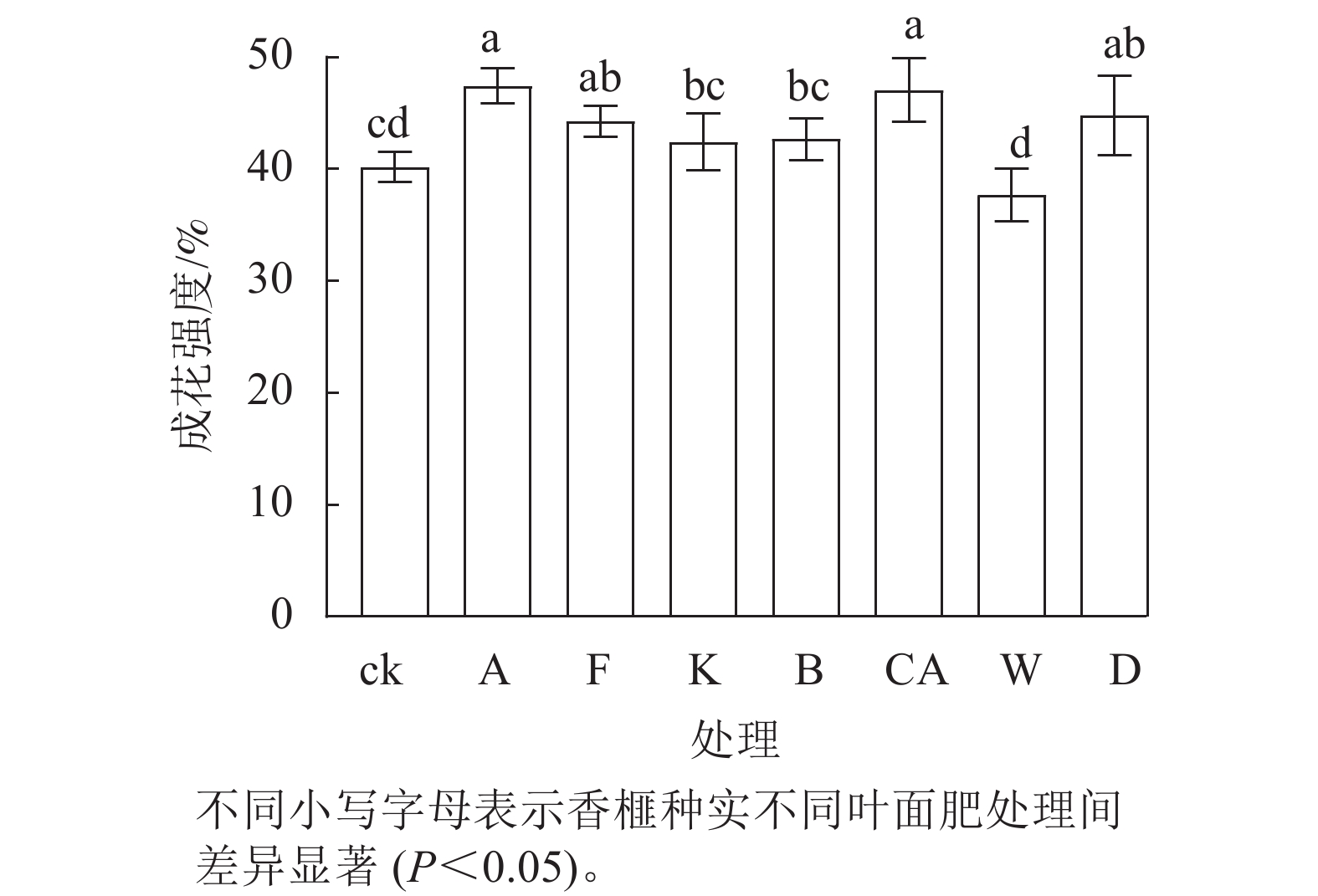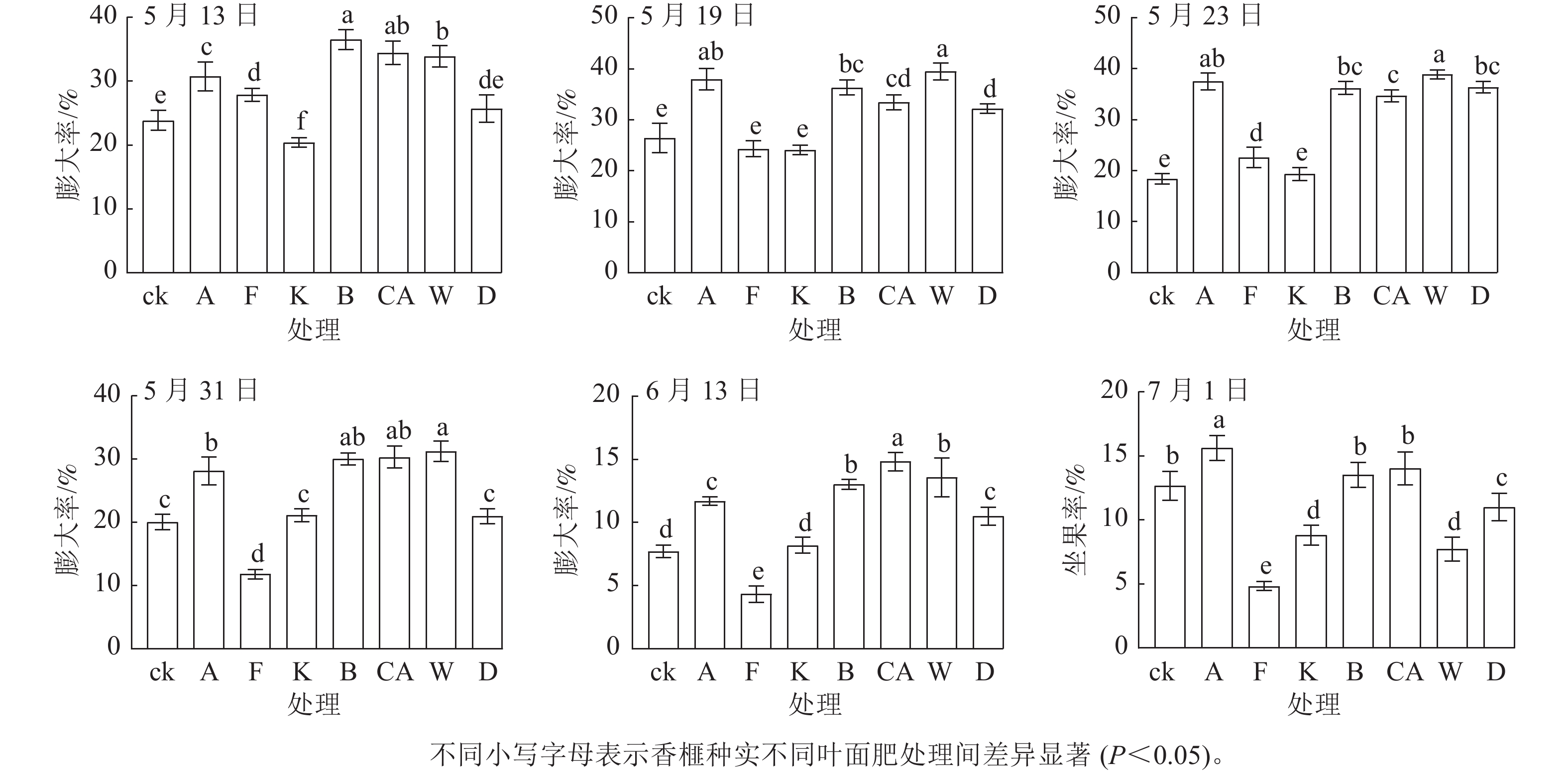Temporal and spatial variation for vertical column density of tropospheric NO2 over the Yangtze River Delta from 2005 to 2013
-
摘要: 利用2005年1月-2013年12月臭氧监测仪传感器DOMINO version 2.0产品数据,对长江三角洲对流层二氧化氮(NO2)柱浓度的时空分布变化特征展开分析,得到以下结论:① 9 a间长三角地区二氧化氮柱浓度平均值为9.721015 moleccm-2,年均复合增长率为2.10%,年增长值为0.261015 moleccm-2。长三角地区作为外向型经济的代表,二氧化氮柱浓度变化趋势与国内经济发展状况十分契合。② 9 a间长三角地区二氧化氮柱浓度基本呈现冬季>秋季>春季>夏季的趋势,异常的低温干旱气候会使二氧化氮柱浓度明显提升。③研究区二氧化氮柱浓度水平受人为活动和气候的共同作用影响,但就直接作用程度来看,以人为活动排放为主导。④ 9 a间苏北和浙西南中部地区二氧化氮柱浓度一直呈持续增长势态,而苏南和浙东北地区正趋于平稳,长三角核心区域的经济产业结构调整,以及大量工业项目的北迁和南移是背后的主要驱动力。图4表3参43Abstract: Product data from DOMINO version 2.0 for January 2005 to December 2013 was used to analyze the temporal and spatial variation for vertical column density of tropospheric NO2 (TroNO2) over the Yangtze River Delta of China. Results showed that (1) the mean annual TroNO2 vertical column density was 9.72 1015 moleccm-2, the compound growth rate was 2.10%, and growth was 2.6 1014 moleccm-2. (2) Concentration of the TroNO2 column over 9 years indicated a maximum concentration in winter, followed by autumn, spring, and summer. (3) Primarily human activity but also climate influenced the TroNO2 column concentration. (4) The TroNO2 column concentration in northern Jiangsu and the central parts of southwest Zhejiang steadily increased over nine years; whereas it remained stable in southern Jiangsu and northeast Zhejiang. Thus, even with abnormally low temperatures and an arid climate contributing to the apparent increase in the Yangtze River Delta, the TroNO2 column concentration seemed acceptable for domestic economic development. [Ch, 4 fig. 3 tab. 43 ref.]
-
香榧Torreya grandis ‘Merrillii’是榧树Torreya grandis中的优良变异经人工选育的优良品种[1],是中国特有的珍贵经济干果树种[2]。随着人们生活水平的提高,以香榧为代表的健康休闲类坚果消费需求不断增加,市场不断扩大[3]。近年来,浙江省香榧产业发展迅速,平均每年增长面积达3 127 hm2,10余年来种植面积增长了140%[4]。但当前的香榧林地种植模式较为粗犷,在长期的栽培、繁育过程中,存在较多问题。如为了提高产量,大量施肥,施肥结构不合理,导致环境受到污染[5];林区土壤养分受人为活动影响明显,人工成本高,香榧吸收土壤养分所需时间长[6];通过栽培措施,香榧产量有所增多,但种实品质下降,树体的生长也受到影响[7]。每年6—9月是香榧的种实充实期,种实体积无明显变化,光合作用的产物主要用于种仁发育和内部物质积累[8]。生产上为了避免引起“反青”现象,在香榧种实充实期不施用肥料,但是,在实践中发现不及时补充营养元素会对香榧树体后期生长以及香榧种实的品质产生影响。为提高香榧种实品质,在保证相对一致的生产管理条件下,本研究以香榧种实充实期补肥作为切入点,对香榧种实的外观性状以及营养品质开展研究。研究结果可为筛选优良商品叶面肥,提高香榧种实品质提供理论和生产依据。
1. 材料与方法
1.1 试验区概况
试验区位于浙江省杭州市临安区畈龙村香榧基地(31°19′46′′N,120°43′27′′E),亚热带季风气候,气候总体特征为四季分明,空气湿润,雨量丰沛,光照充足。年平均气温为17.1 ℃,极端最高气温为39.4 ℃,极端最低气温为−10.4 ℃,年平均降水量为1706.5 mm,年平均相对湿度为80%,年平均风速为1.6 m·s−1。试验样地0~20 cm土壤中全氮、全磷和全钾的质量分数分别为1.96、0.96、9.95 g·kg−1。样地香榧年产量约为350 kg,每年施肥以复合肥和猪粪为主。
1.2 试验方法
选取香榧基地内立地条件、株高、结实量基本一致的40株15年生香榧为研究对象,在香榧种实充实期(2021年6—8月)喷施叶面肥。设置清水对照 (ck),氨基酸水溶肥 (处理A,活性氨基酸100.0 g·L−1、有机质130.0 g·L−1、锌15.0 g·L−1、硼5.0 g·L−1),黄腐酸水溶肥 (处理F,黄腐酸 500.0 g·kg−1、腐殖酸700.0 g·kg−1、有机质750.0 g·kg−1、氧化钾120.0 g·kg−1),活力钾水溶肥 (处理K,钾400.0 g·kg−1、氮110.0 g·kg−1、磷 40.0 g·kg−1、镁20.0 g·kg−1、硼2.5 g·kg−1、锌1.5 g·kg−1),高力钙水溶肥 (处理CA,钙195.0 g·L−1、硼+锌+铁10.0 g·L−1、镁5.0 g·L−1),液体硼水溶肥 (处理B,硼150.0 g·L−1、锌1.0 g·L−1),微量元素水溶肥 (处理W,铁75.0 g·kg−1、锌30.0 g·kg−1、硼20.0 g·kg−1、镁12.0 g·kg−1、锰12.0 g·kg−1、铜2.0 g·kg−1、钼+钴1.0 g·kg−1),大量元素水溶肥 (处理D,氮250.0 g·kg−1、磷80.0 g·kg−1、钾200.0 g·kg−1、硼+锌4.0 g·kg−1) 8个处理,稀释1 000倍施用,隔20 d喷1次,连续喷施3次,每个处理喷施5株;选择天气晴朗的10:00前或17:00后完成喷施,以叶片和果面滴水为度。叶面肥购于深圳市杜高生物新技术有限公司。
1.3 生理指标测定
于2021年9月中上旬香榧种实开裂后,分别在每株样树的东西南北4个方向随机采集成熟香榧鲜种实60颗,置于干冰中带回实验室,置于−40 ℃冰箱保存。测完种实表型后将其置于阴凉通风处,等待假种皮自然开裂,用于后续研究。测定内容包括种核纵径、种核横径、核形指数(种核纵径/种核横径)、单核质量、出核率、种仁纵径、种仁横径、仁形指数(种仁纵径/种仁横径)、单仁质量、出仁率及种仁油脂质量分数、蛋白质质量分数、淀粉质量分数、可溶性糖质量分数、脂肪酸组成、矿质元素质量分数共16个种实性状指标[9]。翌年3—5月统计成花强度、膨大率和坐果率。
1.3.1 种实外形指标测定
用精度为0.01 cm的电子游标卡尺测量种核和种仁的纵横径;用万分之一电子天平测量单核质量和单仁质量。
1.3.2 油脂、蛋白质、淀粉、可溶性糖质量分数和脂肪酸组分测定
油脂质量分数参照GB/T 14772—2008《食品中粗脂肪的测定》测定;蛋白质质量分数用凯氏定氮法测定;淀粉和可溶性糖质量分数参照蒽酮比色法测定;脂肪酸组分根据GB 5009.168—2016《食品中脂肪酸的测定》测定,将提出的油进行甲酯化,采用峰面积归一化法测定脂肪酸相对含量。
1.3.3 元素质量分数测定
用硫酸-过氧化氢(H2SO4-H2O2)联合消煮法消煮待测样品,氮和磷质量分数采用凯氏定氮法和钼锑抗比色法测定;用硝酸-过氧化氢(HNO3-H2O2)联合消煮法消煮待测样品,钾、铜、锌、铁、锰、钙、镁的质量分数采用ICPA-PRO电感耦合等离子体质谱仪测定。
1.3.4 成花强度测定
于2022年5月统计每株样树上部、中部、下部共20根1年生枝的花芽及叶芽的数量,并计算成花强度=(花芽数量/总芽数量)×100%。
1.3.5 膨大率和坐果率测定
于2022年3月统计每株样树上10根枝条的第2代果实数量,从5月开始隔5~10 d统计1次种实数量,直到7月初共统计6次。膨大率=(每次膨大种实数量/ 3月种实数量)×100%,坐果率=(每次种实数量/ 3月种实数量)×100%。
1.4 数据统计与分析
所有数据均测定3个以上生物学重复,取平均值。利用Excel 2022和SPSS 25.0进行数据整理与统计分析,利用单因素方差分析比较不同叶面肥处理下香榧种实之间存在的差异,运用最小显著性差异法进行多重比较,使用主成分分析法对香榧种实品质进行综合评价,采用Graph Pad Prism制图。
2. 结果与分析
2.1 不同叶面肥处理对香榧种实形态指标的影响
由表1可知:处理A和处理F对于香榧种实的核形指数、单核质量、单仁质量较对照均有显著(P<0.05)提高;处理D的单仁质量较对照显著(P<0.05)增加了9.5%;处理CA对于香榧种实出仁率的影响比其他叶面肥显示出更大的优势,比对照增加了3.3%。
表 1 不同叶面肥处理下香榧种实形态指标的比较Table 1 Comparison of morphological indexes under different foliar fertilizer treatments of seeds in T. grandis‘Merrillii’处理 核形指数 单核质量/g 出核率/% 仁形指数 单仁质量/g 出仁率/% ck 1.844±0.071 b 1.833±0.257 b 20.027±0.647 ab 2.228±0.086 ab 1.209±0.071 b 66.009±0.345 c A 2.001±0.093 a 2.013±0.207 a 21.720±0.944 a 2.233±0.144 a 1.357±0.099 a 67.742±0.651 b F 1.979±0.042 a 1.993±0.105 a 18.923±0.211 bc 2.225±0.053 ab 1.333±0.056 a 66.864±0.993 bc K 1.927±0.040 ab 1.904±0.107 ab 19.386±0.828 bc 2.179±0.056 ab 1.296±0.074 ab 67.184±0.804 b B 1.961±0.105 ab 1.952±0.277 ab 18.059±0.724 c 2.192±0.125 ab 1.291±0.198 ab 66.947±0.947 bc CA 1.962±0.072 ab 1.939±0.083 ab 19.520±0.864 b 2.231±0.088 a 1.321±0.057 ab 68.197±0.218 a W 1.936±0.083 ab 1.906±0.152 ab 21.403±0.455 a 2.070±0.093 b 1.276±0.104 ab 66.981±0.645 bc D 1.944±0.035 ab 1.970±0.065 ab 19.952±0.614 b 2.190±0.038 ab 1.324±0.047 a 67.230±0.932 b 说明:数据为均值±标准差。同一列的不同小写字母表示不同处理间差异显著(P<0.05)。 2.2 不同叶面肥处理对香榧种实品质指标的影响
2.2.1 不同叶面肥处理对香榧种实油脂、蛋白质、淀粉、可溶性糖质量分数的影响
由图1可知:处理D、处理A、处理K的香榧种实油脂质量分数分别为53.202%、53.003%和52.151%,比对照分别增加了12.3%、11.9%和10.1%;处理K的香榧种实的蛋白质质量分数为24.937%,比对照增加了13.6%,同时处理B和处理A的香榧种实蛋白质质量分数分别为23.615%和23.362%,较对照分别显著(P<0.05)增加了7.6%和6.4%;处理A、处理K和对照间的香榧种实淀粉质量分数无显著差异,但显著(P<0.05)低于其他处理,最低的是处理A ,为5.467%,低于对照1.9%;处理A和处理D对香榧种实可溶性糖质量分数产生显著(P<0.05)促进作用,分别为4.257%和4.530%,与对照相比分别增加8.9%和15.9%。
2.2.2 不同叶面肥处理对香榧种实脂肪酸相对含量的影响
由表2可知:香榧种实中所含脂肪酸多为硬脂酸、棕榈酸、油酸、亚油酸、亚麻酸、花生一烯酸、花生二烯酸、金松酸这8种脂肪酸,其中不饱和脂肪酸(油酸、亚油酸、亚麻酸、花生一烯酸、花生二烯酸、金松酸)的相对含量远远高于饱和脂肪酸(硬脂酸、棕榈酸)。脂肪酸中亚油酸的相对含量最高(39.512%~43.900%),其次是油酸(35.254%~38.172%)、金松酸(7.591%~8.797%)、棕榈酸(6.706%~8.985%),亚麻酸相对含量最低,为0.279%~0.330%,可见香榧种实中的不饱和脂肪酸主要是亚油酸和油酸。
表 2 不同叶面肥处理下香榧种实脂肪酸组成和相对含量Table 2 Composition and contents and fatty acid under different foliar fertilizer treatments of seeds in T. grandis‘Merrillii’处理 相对含量/% 棕榈酸 硬脂酸 油酸 亚油酸 亚麻酸 ck 8.985±0.106 g 3.528±0.107 e 38.172±3.327 a 39.512±2.915 d 0.279±0.008 d A 8.451±0.115 e 2.927±0.127 d 35.254±2.426 e 42.364±2.700 b 0.291±0.013 cd F 7.965±0.222 d 2.297±0.019 ab 36.658±2.457 bc 42.412±2.858 b 0.287±0.009 d K 8.627±0.323 f 3.147±0.237 d 37.246±2.431 b 40.570±3.552 c 0.330±0.016 a B 6.822±0.413 b 2.505±0.214 bc 36.848±1.673 bc 42.973±2.907 b 0.301±0.014 bc CA 7.045±0.375 c 2.622±0.327 c 36.910±1.781 bc 42.606±3.682 b 0.301±0.017 bc W 6.897±0.408 b 2.397±0.112 bc 35.862±1.535 de 43.950±3.648 a 0.303±0.022 bc D 6.706±0.636 a 2.158±0.313 a 36.479±2.298 cd 43.974±3.358 a 0.307±0.025 b 处理 相对含量/% 花生一烯酸 花生二烯酸 金松酸 饱和脂肪酸 不饱和脂肪酸 ck 0.452±0.021 b 1.480±0.130 b 7.591±0.868 e 12.513±2.303 g 87.487±5.826 g A 0.472±0.057 b 1.446±0.110 b 8.797±0.334 a 11.377±2.341 e 88.623±6.141 e F 0.476±0.043 b 1.462±0.115 b 8.442±0.503 bc 10.262±2.309 d 89.738±7.509 d K 0.543±0.045 a 1.478±0.186 b 8.060±1.046 d 11.774±2.558 f 88.226±6.007 f B 0.496±0.044 ab 1.543±0.093 b 8.513±1.034 bc 9.327±1.628 b 90.673±7.933 b CA 0.453±0.062 b 1.721±0.080 a 8.342±0.987 c 9.666±1.703 c 90.334±8.103 c W 0.444±0.012 b 1.528±0.096 b 8.619±0.923 ab 9.294±1.522 b 90.706±7.841 b D 0.457±0.030 b 1.592±0.142 ab 8.328±0.720 c 8.864±0.950 a 91.136±8.058 a 说明:数据为均值±标准差。同列的不同小写字母表示不同处理间差异显著(P<0.05)。 棕榈酸、硬脂酸和油酸相对含量在对照中最高。棕榈酸和硬脂酸相对含量在处理B和处理W间无显著差异,但它们与其他处理间差异显著(P<0.05),处理D相对含量最低;油酸相对含量在处理F、处理B、处理CA处理间无显著差异,但它们与其他处理间差异显著(P<0.05),处理A相对含量最低;亚油酸相对含量在处理W、处理D间无显著差异,但显著(P<0.05)高于其他处理;亚麻酸和花生一烯酸相对含量在处理K中显著(P<0.05)高于其他处理,其他处理之间无显著差异;处理A的亚麻酸相对含量显著(P<0.05)高于其他处理,其他处理之间无显著差异;金松酸相对含量最高的是处理A,最低的是对照处理。饱和脂肪酸相对含量最低,不饱和脂肪酸相对含量最高的是处理D。从不饱和脂肪酸相对含量来讲,处理D、处理W、处理B、处理CA处理优于其他处理,尽管各脂肪酸成分不同。
2.2.3 不同叶面肥处理对香榧种仁元素质量分数的影响
香榧种仁中含有丰富的营养元素。从表3可以看出:氮元素质量分数为51.050~54.645 g·kg−1,镁元素质量分数为4.595~5.188 g·kg−1,铁元素质量分数为45.718~68.594 mg·kg−1。氮、镁、铁元素质量分数最高的均为处理A的香榧种仁,比对照分别增加了6.9%、11.6%、5.8%。铜元素质量分数为17.874~22.911 mg·kg−1,锰元素质量分数为27.497~35.295 mg·kg−1,铜、锰质量分数最高的均为处理F的香榧种仁,比对照分别增加了3.9%、28.3%。磷元素质量分数为6.139~6.728 g·kg−1,钙元素质量分数0.706~0.879 g·kg−1,磷和钙质量分数最高的均为处理CA的香榧种仁,比对照分别增加了9.6%和14.0%。
表 3 不同叶面肥处理下香榧种仁营养元素质量分数Table 3 The element contents of kernel under different foliar fertilizer treatments in T. grandis‘Merrillii’处理 氮/(g·kg−1) 磷/(g·kg−1) 钾/(g·kg−1) 钙/(g·kg−1) 镁/(g·kg−1) 铜/(mg·kg−1) ck 51.108±3.197 d 6.139±0.084 f 12.118±0.523 bcd 0.771±0.083 cd 4.649±0.123 bc 22.055±2.148 b A 54.645±2.105 a 6.463±0.370 c 11.704±1.638 cd 0.849±0.089 ab 5.188±0.319 a 19.630±1.800 c F 52.135±2.729 c 6.393±0.251 d 12.078±1.442 cd 0.706±0.096 e 4.886±0.324 abc 22.911±0.469 a K 53.531±1.831 b 6.437±0.281 c 11.631±1.354 d 0.799±0.032 cd 4.937±0.528 ab 19.363±1.644 c B 52.328±2.384 c 6.454±0.121 c 13.006±0.295 a 0.755±0.107 d 4.595±0.381 c 22.114±1.521 b CA 53.362±1.259 b 6.728±0.287 a 12.677±0.556 ab 0.879±0.074 a 5.047±0.276 a 18.645±1.501 d W 51.050±0.650 d 6.231±0.269 e 12.215±1.537 bc 0.814±0.053 bc 4.662±0.327 bc 17.874±2.282 e D 52.044±3.550 c 6.647±0.225 b 12.102±0.511 bcd 0.846±0.092 ab 5.037±0.255 a 22.053±2.801 b 处理 锌/(mg·kg−1) 铁/(mg·kg−1) 锰/(mg·kg−1) 大量元素/(g·kg−1) 微量元素/(mg·kg−1) ck 66.105±5.100 e 64.822±6.952 a 27.502±4.345 f 74.894±4.101 d 181.484±9.545 a A 68.349±6.403 b 68.594±6.443 a 30.355±5.294 cd 78.854±4.521 a 186.803±11.940 a F 66.848±6.474 d 57.447±2.518 bc 35.295±5.500 a 76.198±4.941 c 182.501±8.961 b K 69.018±2.521 ab 48.187±4.199 de 32.720±1.890 b 77.328±4.126 b 169.288±9.254d B 63.794±5.787 f 61.254±6.337 b 30.903±4.788 c 77.138±3.287 b 178.065±10.432 c CA 67.500±4.953 c 45.718±1.005 e 30.140±2.407 d 78.586±2.460 a 162.003±8.865 f W 66.510±5.612 de 52.337±6.876 cd 27.497±1.880 f 74.973±2.936 d 164.218±9.650 f D 70.271±5.607 a 58.194±2.229 bc 29.113±3.293 e 76.675±4.634 c 179.412±7.930 c 说明:数据为均值±标准差。同一列的不同小写字母表示不同处理间差异显著(P<0.05)。 2.2.4 不同叶面肥处理对香榧种实翌年成花强度的影响
如图2所示:处理A、处理F、处理CA、处理D对于花芽比例的提升均有一定作用,且差异显著(P<0.05),其中处理A的成花强度(47.415%)和处理CA的成花强度(47.058%)显著(P<0.05)高于其他处理,较对照分别提高了18.0%和17.1%;次之为处理D的成花强度(44.805%±3.549%)和处理F的成花强度(44.258%±1.375%),较对照分别提高11.5%和10.1%;处理W的成花强度(37.680%±2.332%)最低,比对照减少6.2%。
2.2.5 不同叶面肥处理对香榧种实第2年膨大率和坐果率的影响
从图3可以看出:5月13—19日香榧种实的膨大率在波动中呈上升趋势,5月19—23日处理B膨大率仍在继续上升,而其他处理则开始下降;5月23日至6月13日对照和处理K的膨大率先上升后下降,而其他处理则持续下降,在7月1日左右趋于平稳,其中处理CA的下降趋势较其他处理较为平缓。
对香榧种实7月坐果率进行多重比较分析发现:处理A 的坐果率(15.625%)显著(P<0.05)高于其他处理,比对照增加了23.4%,其次是处理CA(14.037%)和处理B (13.507%),比对照分别提高了10.9%和6.7%;最低的是处理F(4.831%),低于对照61.8%。
2.3 香榧种实品质评价的综合得分
由表4可知:15项指标经主成分分析后提取出5个主成分,特征值均大于1.000,累计方差贡献率为91.701%,说明前5个主成分所含有原本15项指标91.701%的信息。根据主成分分析结果对影响香榧种实品质的各方面因素进行综合评价,利用公式计算综合得分(F):F=0.3892F1+0.2184F2+ 0.1410F3+0.1025F4+0.0660F5,综合主成分F值越高,综合品质表现越好。由表5可见:处理A的综合评分最高,说明喷施氨基酸肥可有效改善香榧种实的品质。此外,处理CA、处理D的香榧种实品质的也受到显著影响,说明钙肥和大量元素肥也可有效改善香榧种实的品质。
表 4 主成分因子载荷矩阵Table 4 Load matrix of principal component factor指标 主成分 指标 主成分 F1 F2 F3 F4 F5 F1 F2 F3 F4 F5 核形指数 0.911 −0.235 −0.182 0.111 −0.231 可溶性糖质量分数 −0.141 0.204 0.847 0.310 −0.101 单核质量 0.871 −0.109 −0.196 0.358 −0.236 不饱和脂肪酸相对含量 0.364 −0.729 −0.217 0.074 0.298 出核率 0.084 −0.156 0.736 0.409 0.082 金松酸相对含量 0.744 −0.482 0.029 0.218 −0.203 仁形指数 0.292 0.851 −0.367 0.133 0.142 大量元素质量分数 0.893 0.352 0.065 −0.260 0.063 单仁质量 0.947 −0.119 −0.083 0.154 −0.163 微量元素质量分数 −0.174 0.623 −0.059 0.685 −0.284 出仁率 0.894 −0.105 0.114 −0.265 0.284 成花强度 0.844 0.442 −0.152 0.085 0.182 油脂质量分数 0.661 0.093 0.618 −0.090 0.094 坐果率 0.314 0.561 0.356 −0.039 0.429 蛋白质质量分数 0.234 0.014 0.403 −0.671 −0.556 特征值 6.227 3.494 2.256 1.640 1.055 淀粉质量分数 −0.125 −0.904 0.148 0.257 0.228 累计贡献率 38.918 60.753 74.855 85.104 91.701 表 5 喷施叶面肥后香榧种实的综合评分Table 5 Comprehensive evaluation of T. grandis‘Merrillii’seeds after spraying foliar fertilizer处理 F1 F2 F3 F4 F5 F 排名 ck −4.803 2.456 0.201 0.604 0.601 −1.203 7 A 8.532 1.661 1.599 1.234 −0.584 3.997 1 F 0.614 −0.514 −2.829 1.056 −0.914 −0.224 5 K −0.909 0.624 1.029 −2.176 −1.250 −0.378 6 B 0.501 0.089 −1.156 −0.694 −0.455 −0.050 4 CA 5.531 0.188 −0.857 −1.346 1.895 2.060 2 W −4.334 −3.806 1.152 0.130 0.008 −2.341 8 D 2.052 −0.698 0.862 1.191 0.699 0.936 3 3. 讨论
叶面施肥在现代农业中发挥着重要作用,可以改善植物因土壤肥吸收不足而缺乏营养的状况,从而提高肥料的利用效率,但叶面施肥对果实品质的影响存在差异[10]。唐岩等[11]对苹果Malus pumila的研究发现:喷施叶面肥能显著增加苹果果实可溶性固形物和挥发性物质的种类和质量分数,降低可滴定酸。李秋利等[12]研究发现:叶面喷施山梨醇和蔗糖促进了桃Prunus persica果实着色,增加果实可溶性固形物,有利于整体提升桃果实品质。刘松忠等[13]研究发现:对叶片喷施氨基酸肥可显著提高黄金梨Pyrus pyrifolia ‘Hwangkumbae’果实的总糖、蔗糖、果糖和葡萄糖质量分数,降低总酸及苹果酸、酒石酸质量分数。
香榧种实油脂、蛋白质、淀粉、可溶性糖质量分数以及脂肪酸组成是影响香榧种实品质的重要指标。香榧中蛋白质、油脂质量分数越高,淀粉质量分数越低,香榧种实的口感就会越细腻香脆[14]。叶面喷施适量的氨基酸肥对香榧种实的核形指数、单核质量等有显著的促进效果,且在7种处理中效果最为显著;对于油脂、蛋白质、可溶性糖质量分数的增加和淀粉质量分数的减少也有显著作用。这可能是叶面肥的喷施使得枝叶角质层所含的羟基与氨基酸产生强亲和性[15],将叶片角质层软化渗入营养元素,补充香榧种实在充实期生长发育所需要的营养成分,改善种实品质,促进树体生长发育[16]。同样,叶面追肥时施用氨基酸水溶肥也有效提高了玉米Zea mays[17]、小白菜Brassica campestris[18]、棉花Gossypium hirsutum[19]等的生长指标,增强叶片的光合作用和养分转化,从而实现增产增收。
钙是细胞壁的重要组成部分,同时也是细胞膜的保护剂,可以增强膜结构的稳定性[20]。此外,钙离子作为植物细胞内的第二信使具有调节细胞内部多种生理活动的功能[21]。有研究表明:叶面喷施钙肥可以快速为植物补充钙素,能有效提高作物坐果率、产量与品质,防止裂果并延长果实的储藏期[22−23]。叶面喷施糖醇螯合钙肥不仅显著增加了香榧种实的仁形指数和出仁率,增加花生二烯酸的合成,提高香榧种实内磷元素和镁元素的质量分数,还能促进翌年树体的花芽分化,为开花结实提供更多养分,显著增加膨大率和坐果率,促进香榧幼果的快速膨大,减少僵果、落果,增加产量。该结果与叶面施钙在辣椒Capsicum annuum[24−25]、荔枝Litchi chinensis[26]和苹果[27]等水果中的应用效果一致。
大量元素水溶肥能明显提高香榧种实的单仁质量、油脂质量分数和可溶性糖质量分数,对其他特性也有显著影响。可能是由于本研究使用的大量元素水溶肥除基本的氮、磷、钾元素外还含有硼、锌元素,具备比较均衡全面的养分,这些元素具有不同的生理功能并进行相互作用,促进树体生长发育。其中硼元素促进植物体内碳水化合物的合成、运输和代谢,显著增加果实的单果质量,有效减少果实机械损伤[28];锌元素作为各种酶类(超氧化物歧化酶、乙醇脱氢酶、碳酸酐酶、RNA 聚合酶等)的成分或活化剂,可激活光合作用中与碳代谢有关的多种酶,使之向蔗糖合成途径转移[29]。
4. 结论
从本研究结果可知:氨基酸水溶肥处理的综合评分最高,说明喷施氨基酸肥可有效改善香榧种实的品质;此外,大量元素水溶肥对于香榧种实品质的提升有显著的影响,钙肥可以显著影响香榧树体花芽分化、膨大坐果。在生产实践中应根据果树的生长状况进行复合施肥,将叶面肥混合使用,效果可能更佳。
期刊类型引用(3)
1. 张腾飞,王冀蒙,李文龙,张京政,于立洋,张海娥,曹飞. 全营养素输液滴干对板栗营养生长及光合特性影响的研究. 农学学报. 2025(01): 51-56 .  百度学术
百度学术2. 叶淑媛,曾燕如,曹永庆,田苏奎,喻卫武. 香榧种实生长早期枝叶和种实矿质元素质量分数及积累量动态分析. 浙江农林大学学报. 2024(05): 1047-1055 .  本站查看
本站查看3. 戎逸忠,高俊杰,程澍时,张震,张莉. 不同种植密度和施肥处理下优势杂草对小麦生长特征的影响. 浙江农林大学学报. 2024(06): 1252-1260 .  本站查看
本站查看其他类型引用(0)
-

-
链接本文:
https://zlxb.zafu.edu.cn/article/doi/10.11833/j.issn.2095-0756.2015.05.006
 点击查看大图
点击查看大图
计量
- 文章访问数: 2493
- HTML全文浏览量: 418
- PDF下载量: 445
- 被引次数: 3




 下载:
下载:



 下载:
下载:
